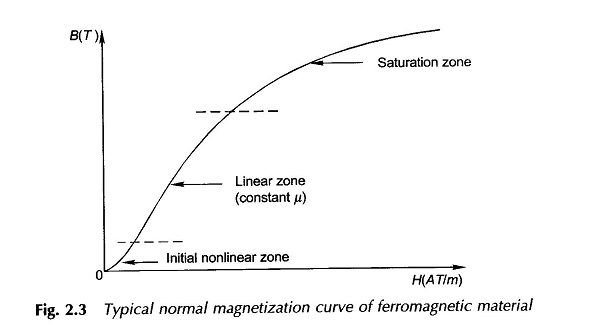Magnetic Circuit Interview Questions & Answers
Posted On:February 5, 2019, Posted By:Latest Interview Questions,
Views:2689, Rating : 









Best Magnetic Circuit Interview Questions and Answers
Dear Readers, Welcome to Magnetic Circuit Interview Questions and Answers have been designed specially to get you acquainted with the nature of questions you may encounter during your Job interview for the subject of Magnetic Circuit. These Magnetic Circuit Questions are very important for campus placement test and job interviews. As per my experience good interviewers hardly plan to ask any particular questions during your Job interview and these model questions are asked in the online technical test and interview of many IT & Non IT Industries.
1. Mention the types of electrical machines.
There are three basic rotating machines types, namely:
a. The dc machines
b. the poly phase synchronous machine (ac), and
c. Poly and single phase induction machine (ac)and a stationary machine, namely Transformer

2. State Ohm’s law for magnetic circuit.
It states that the magneto motive force across the magnetic element is equal to the product of the magnetic flux through the magnetic element and the reluctance of the magnetic material. It is given by
MMF = Flux X Reluctance
3. Define leakage flux
The flux setup in the air paths around the magnetic material is known as leakage flux.
4. Define magnetic reluctance
The opposition offered by the magnetic circuit for the magnetic flux path is known as magnetic reluctance. It is analogous to electric resistance.
5. Draw the typical normal magnetization curve of ferromagnetic material.

6. What is fringing?
In the air gap the magnetic flux fringes out into neighboring air paths due to the reluctance of air gap which causes a non uniform flux density in the air gap of a machine. This effect is called fringing effect.
7. State stacking factor.
The stacking factor is defined as the ratio of the net cross sectional area of a magnetic core to the gross cross sectional area of the magnetic core. Due to lamination net cross sectional are will be always less than gross cross sectional area. Therefore the value of stacking factor is always less than unity.
8. Mention some magnetic materials
Alnicos, chromium steels, copper–nickel alloy, nickel, cobalt, tungsten and aluminium.
9. What is magnetostriction?
When ferromagnetic materials are subjected to magnetizing mmf, these may undergo small changes in dimension; this phenomenon is known as magnetostriction.
10.Define statically induced emf.
The coil remains stationary with respect to flux, but the flux through it changes with time. The emf induced is known as statically induced emf.
11. Define dynamically induced emf.
Flux density distribution remains constant and stationary but the coil move relative to it.The emf induced is known as dynamically induced emf.
12. State Fleming’s right hand rule.
Extend the thumb, fore and middle finger of the right hand so that they are mutually perpendicular to each other. If the thumb represents the direction of movement of conductor and the fore finger the direction of magnetic flux, then the middle finger represents the direction of emf
13. State Fleming’s Left hand rule.
Extend the thumb, fore and middle finger of the right hand so that they aremutually perpendicular to each other. If the forefinger represents the direction of flux and the middle finger the direction of current, then the middle finger represents the direction of movement of conductor.
14. What are the losses called as core loss?
Hysteresis loss and eddy current loss.
15. Define coercivity.
It is the measure of mmf which, when applied to the magnetic circuit would reduce its flux density to zero, i.e., it demagnetizes the magnetic circuit.